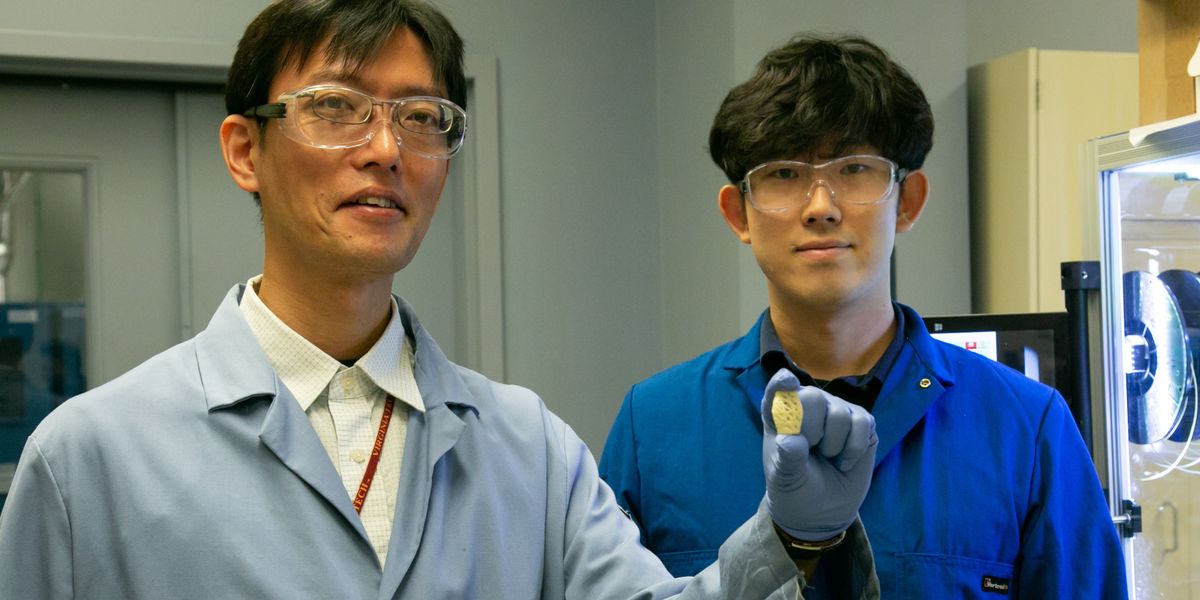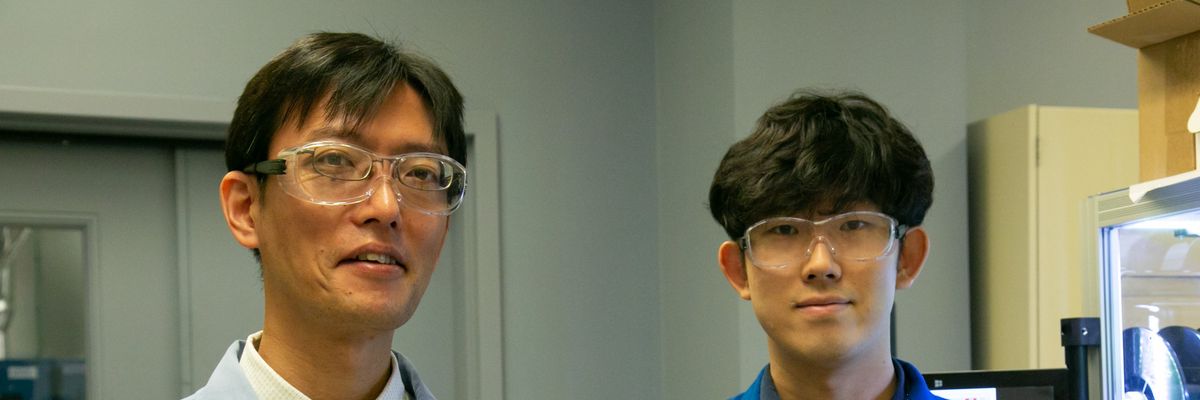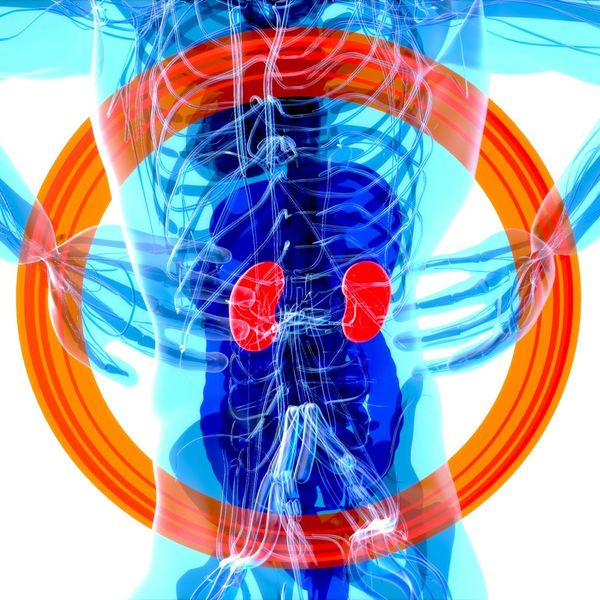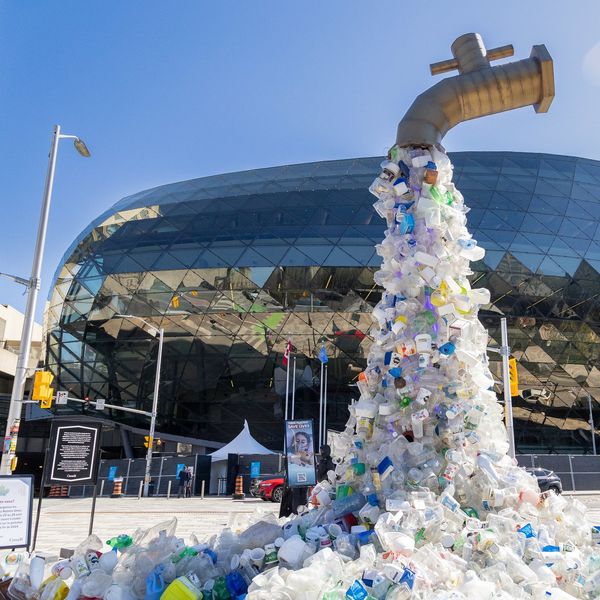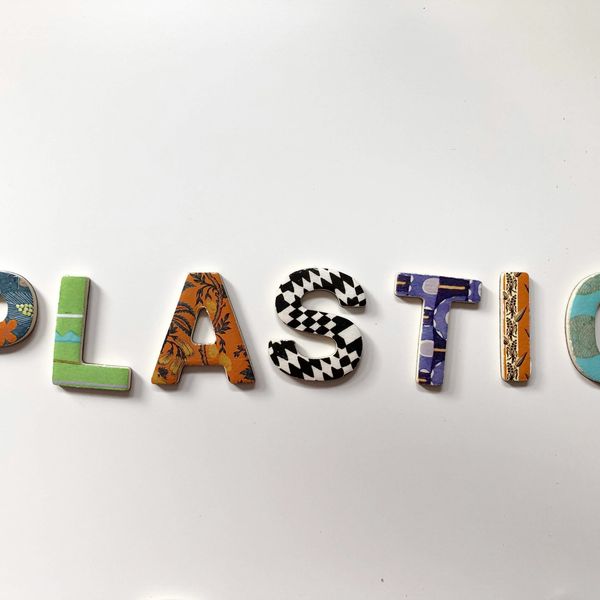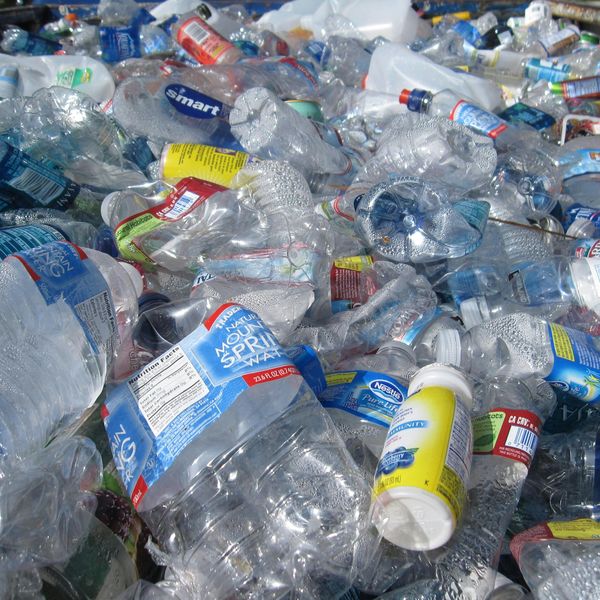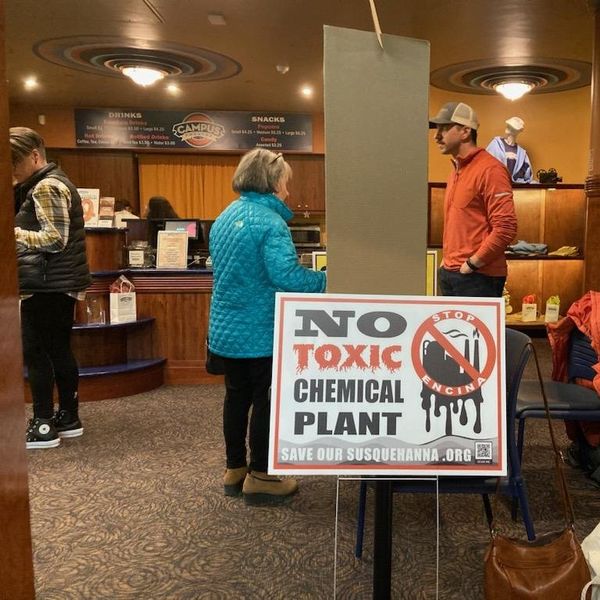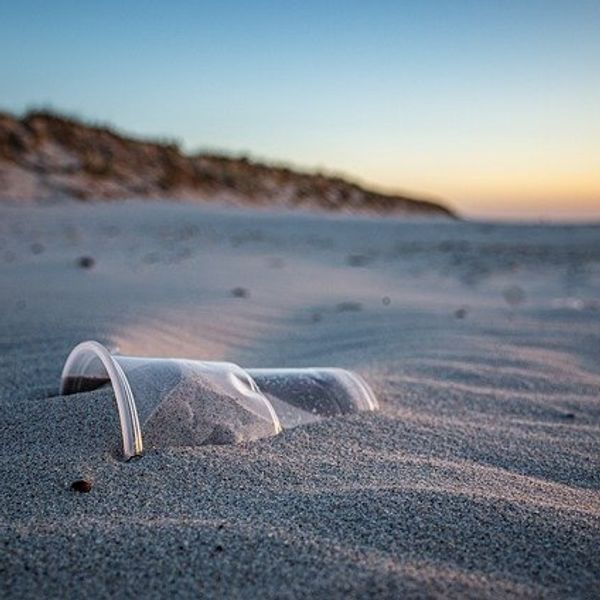But the vast majority of the nearly 350 million metric tons of plastic produced every year returns to the Earth, averaging 500 years of slow decomposition into soil and water. Over the last 50 years, roughly 30 million tons have made it into oceans. Another 100 million tons ended up in rivers, lakes and waterways.
But what if there was a way to break down plastics — even the toughest to recycle — into raw chemical ingredients that could be sold and reused? A new study from scientists at Oak Ridge National Laboratory may have cracked the code to disassemble up to one-third of the world’s unrecyclable mixed plastics. Using a new organic catalyst, researchers designed a compound to separate four of the most used types of mixed plastics at a molecular level, even if they’re chemically bound together or contain trace amounts of impurities.
If this chemical recycling process could be used commercially, the mountains of textiles, styrofoam, drink bottles, food wrappers, and more would become new revenue for waste management facilities while saving them hundreds of millions of dollars in dumping costs. “We know some companies like [Eastman Chemical Company] are already investing in a similar type of chemical recycling process and we know the technology is scalable,” Tomonori Saito, a senior synthetic polymer chemist at Oak Ridge, and corresponding author of the study, told EHN.
Every year, specialized plants for removing recyclables from the waste stream called material resource facilities spend upwards of $70 per ton to dump un-recycled waste in landfills. Reducing plastics could slash significant disposal costs, but chemical separation technology is in its infancy.
Saito said scaling his method will require big changes to the way we recycle and a real-world pilot to show that the catalyst could effectively separate the mixed garbage that ends up in landfills.
Chemical recycling plants have begun to crop up in towns around the U.S. in recent years. But many haven’t lived up to their promise and there are significant environmental justice concerns surrounding the practice. Many of the chemicals used in making plastics are endocrine disruptors — meaning they interfere with the proper functioning of hormones — and are linked to health problems such as infertility, hormonal imbalances, and cancer.
The emissions from superheating plastics to their melting point can release a host of these toxics into the surrounding ecosystem, potentially harming human health if not carefully regulated.
Also advocates say that chemical recycling efforts only continue our reliance on plastic — and that the only true way to reduce waste and exposure is to reduce production.
From the lab to real life: A harsh reality
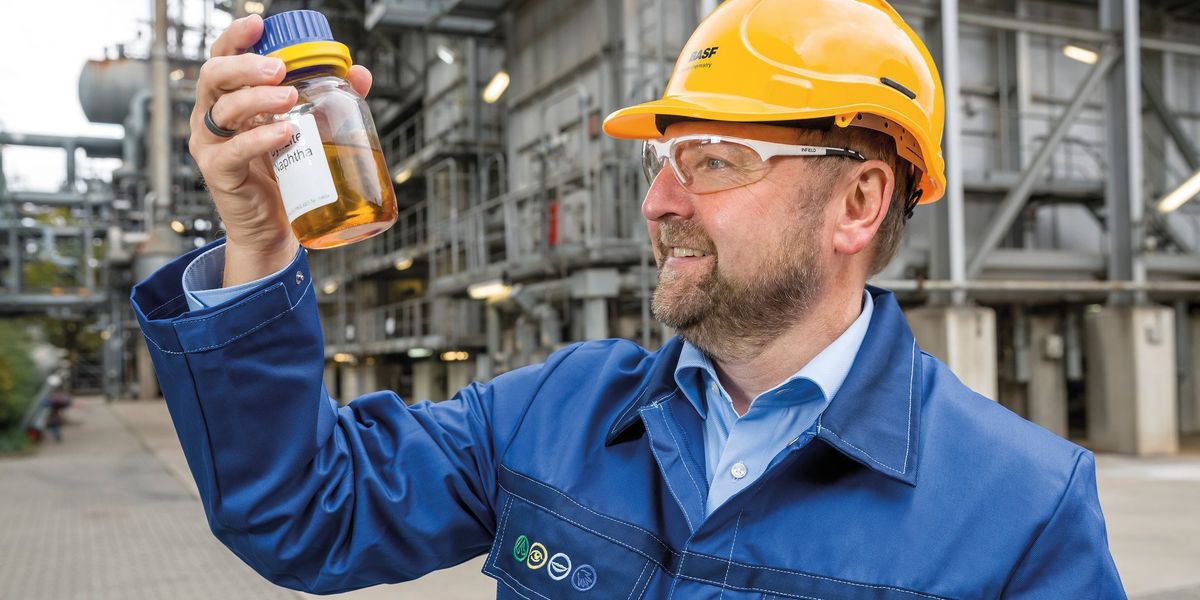 BASF employee with a bottle of pyrolysis oil recovered from plastic waste.
Credit: BASF - We create chemistry/flickr
BASF employee with a bottle of pyrolysis oil recovered from plastic waste.
Credit: BASF - We create chemistry/flickr
Turning the mess of plastics we send to the curb each week into something useful is tricky. The first step of the process is taking plastics commonly found in artificial fibers, water bottles, autoparts, and cellphones, and mixing them with glass, water and other contaminants. By running it through a combined mill, the plastic is shredded into pellets about the size of rice grains and then mixed with the salt catalyst in large vats. As the plastic heats up to between 130 and 215 Celsius –about 420 Fahrenheit – the chemical bonds are broken and the homogenous molten plastic begins to separate and recrystallize, explained Arif Ariffuzzman, lead author of the ORNL study.
The resulting mixture resembles a suspension of Italian dressing. Researchers were able to “scoop” out of this mixture several chemical ingredients at purity rates above 96%, including caprolactam and dimethyl terephthalate, both needed to produce synthetic fibers and other plastics. As valuable as these substances are, some like caprolactam are extremely harmful to humans, while others have not been studied thoroughly enough to determine their real risks.
“This isn’t just an opportunity for us as chemists,” Arifuzzman, who founded a startup called Re-Du Plastics in Knoxville, Tennessee, to commercialize the catalyst, told EHN. “It’s a chance for waste facilities to simultaneously save money and make money.”
Bob Allen, a senior research fellow at the National Renewable Energy Laboratory, said that the study’s findings hold great potential, but Arifuzzman’s excitement is premature. Trying to simply add the chemical process to our current recycling system, he told EHN, “is like me taking my first three martial arts lessons and thinking I'm ready to fight Connor McGregor.” Allen, who spent 35 years as the head of Polymer Research & Technology at IBM, also points out that the 96% purity rate is not the high mark we may think. “The only way you're going to get to where you need to be is to get hyper-pure,” he said, adding “99%, that’s the magic number and a truism in molecular chemistry.”
“This isn’t just an opportunity for us as chemists. It’s a chance for waste facilities to simultaneously save money and make money.” - Arif Ariffuzzman, Re-Du Plastics
In general, chemical manufacturers need strong supply chains of ingredients, Allen said, pointing to the lack of such networks in the way we currently manage mixed plastic waste. He espouses the circular plastic economy Saito and Ariffuzman are striving for but sees the commercialization of chemical recycling five to 10 years in the future. “If you're going to go through the pain and suffering of permitting and financing a new manufacturing facility, running a process never seen before on planet Earth,” he said, “you’d better be sure you’re working with more than just Mickey Mouse quantities of usable material.”
The final hurdle is to reintroduce the material into the marketplace. Many petrochemical companies refer to the impending shift toward a “circular plastic economy”, where billions of tons of plastic waste can theoretically be salvaged and recycled into manufacturing usable materials.
But some question this goal, as many of the plastics we use every day, like polyethylene and polypropylene, often contain per- and polyfluorinated substances (PFAS), a group of toxic chemicals known as “forever chemicals” since they do not decompose organically in the environment and have been linked to several health problems.
“Ten years ago, we would’ve never claimed they’re recyclable,” Alfredo Alexander-Katz, a professor of materials science and engineering at MIT, told EHN. “But since there’s added pressure to reduce our production and consumption of plastics, particularly in the European Union, they started to call them circular, as if they were meant to be recycled.”
In addition, it’s unclear if the method will work with the real-life conditions of plastics found in landfills, Allen pointed out. “Any commercial chemical recycling process needs to be able to handle mixed plastic waste streams riddled with contaminants,” he said. When I asked Saito if, for example, his catalyst would be able to handle things like spent yogurt cups with specks of curdled dairy in them, he admitted getting usable monomers from the material would be “very difficult.”
Unaddressed environmental concerns
Considerations focused on scaling up this chemical recycling process are irrelevant to Lee Bell, a policy and technical advisor at the International Pollutants Elimination Network (IPEN), which specializes in persistent organic pollutants. The potential health hazards the process could carry are reason enough to think twice about scaling the process to an industrial level, he said.
Bell told EHN that one of the experimental catalysts in the study, Trifluoroacetic Acid (TFA), is a “forever chemical” that does not degrade naturally. “I have serious concerns about relying on a recycling process that involves one of the most hazardous chemicals that we're currently trying to manage – and not managing very well at all.” TFA is toxic to humans, and can cause severe burns to the eyes, skin rashes, and major damage to the upper respiratory system. Through prolonged exposure, TFA can also cause potentially fatal harm to the liver and kidneys.
“If you're going to go through the pain and suffering of permitting and financing a new manufacturing facility, running a process never seen before on planet Earth, you’d better be sure you’re working with more than just Mickey Mouse quantities of usable material.” - Bob Allen, a senior research fellow at the National Renewable Energy Laboratory
In 2023, Bell co-authored a report about chemical recycling, which outlines the environmental costs of the type of chemical recycling process Sato and Arifuzzman are trying to get off the ground. Its energy needs are more intense than those of traditional plastic production, making the process 100 times more damaging, and its greenhouse gas emissions are 10 to 100 times higher than those of the production of virgin plastic, according to the report. Additionally only a small fraction of the plastics going into chemical recycling facilities will become plastic. Most of it will become waste (often hazardous), be burned as fuel, or be landfilled, the report states.
Bell also pointed out that the study is also missing a key section: the outlining of emissions, and environmental hazards and listing every chemical involved in the process, a section known as the life cycle assessment (LCA). “Whenever plastic feedstocks are heated above 200 Celsius,” Bell explained, “they will begin to enter the dioxin-formation range.” Dioxins are a set of chemicals that can form when plastics that contain chlorine (many common plastic products do) are brought to higher temperatures and manifest as microscopic crystals finer than the eye can see. When breathed in, dioxins cause cancer, reproductive and developmental problems and damage the immune system. This omission leaves unclear if and how much dioxins the method will produce.
Additionally, the study does not contain any data on PFAS “The fact that there is no mention of PFAS or dioxin makes me very concerned about the reliability of the LCA and the hazards associated with this process itself,” Bell said.
Even well-intentioned experiments like the chemical recycling process that Arifuzzman and Saito have developed are still experimental at best, and dangerous at worst. As Bob Allen put it, there is a very big difference between a closed experiment with five liters of mixed plastic feedstock in a controlled lab and the more than 200,000 metric tons of mixed plastic waste Americans generate every day.
“To be fair to these researchers, [they] are trying to find a solution and they're trying novel techniques, producing some limited success in the laboratory,” Bell said. “But upgrading to a commercial scale is a whole nother game.”
“If I were in one of those communities [considering chemical recycling], I would seriously be asking if the risk is worth maybe producing really good quality, recycled plastic. I think the [answer] has to be no.”
Editor's note: This story has been updated to reflect Lee Bell's title.
- Paused Ohio chemical recycling plant puts spotlight on Appalachia as “prime target” for the controversial practice ›
- Chemical recycling grows — along with concerns about its environmental impacts ›
- What is chemical recycling? ›

